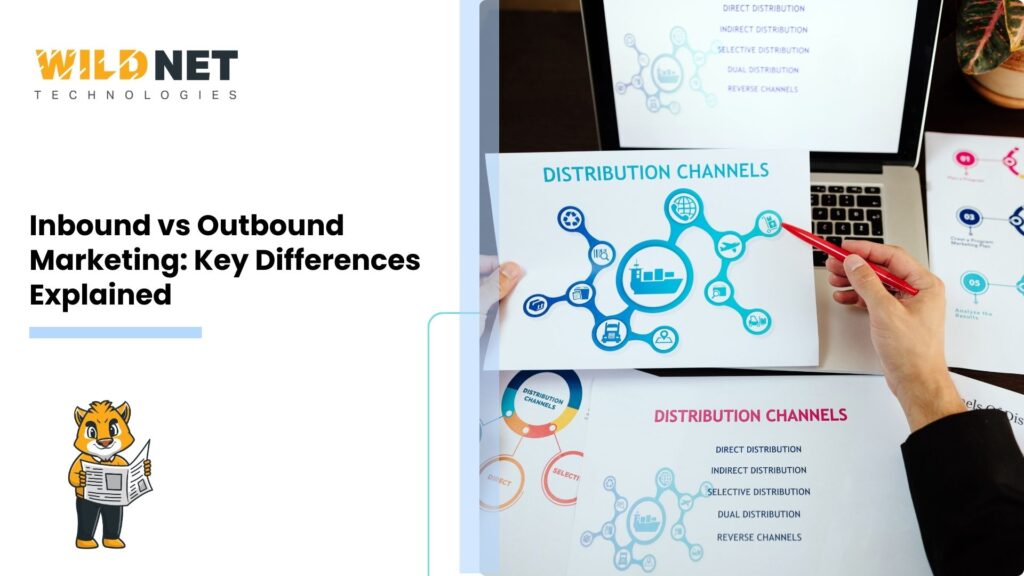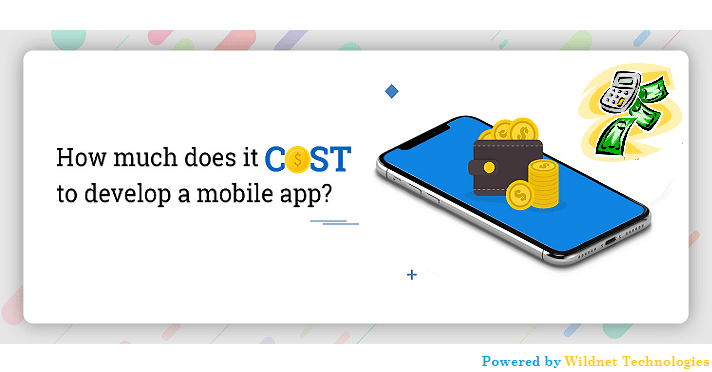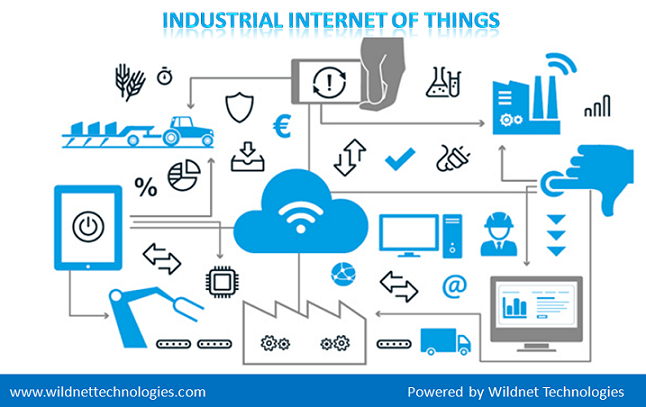In digital marketing, two strategies reign supreme: inbound and outbound marketing. Both have their unique strengths and weaknesses.
Inbound marketing focuses on attracting customers through content creation. It’s about building relationships and providing value.
On the other hand, outbound marketing takes a more traditional approach. It involves reaching out to potential customers through paid advertising and direct mail.
But which strategy is right for your business?
This article aims to clarify the key differences between inbound and outbound marketing. We’ll delve into their unique characteristics, advantages, and disadvantages.
Understanding these differences lets you decide which strategy best aligns with your business goals.
Whether you’re a seasoned digital marketer, a business owner, or a marketing student, this guide will enhance your understanding of these two pivotal marketing strategies.
So, let’s dive in and explore the fascinating world of inbound vs outbound marketing.
Understanding Inbound Marketing
Inbound marketing is a strategic approach focused on attracting, engaging, and delighting customers. Unlike traditional methods, it draws customers in rather than pushing messages out. This approach is rooted in providing valuable content, encouraging prospects to connect with your brand.
Content is the cornerstone of inbound marketing. It involves creating and sharing valuable content to convert strangers into customers. Inbound marketing establishes trust and builds long-term relationships by crafting content that addresses your target audience’s needs and pain points.
Digital marketing plays a crucial role in inbound strategies. Channels like SEO, blogs, and social media allow businesses to increase their reach, and they are pivotal in ensuring that content gets seen by the right people.
Moreover, analytics are essential to inbound marketing. Measuring and analyzing your efforts helps refine strategies. This data-driven approach ensures that marketing efforts are practical and efficient.
Understanding the difference between inbound vs outbound marketing is key to developing the right strategy for your business.
To sum up, inbound marketing is about being a trusted resource for your audience. It’s about fostering trust and positioning your brand as a thought leader. This approach boosts customer loyalty and enhances brand reputation over time.
Defining Inbound Marketing
Inbound marketing is an approach designed to attract customers by creating valuable content. It encourages engagement and builds trust naturally. This strategy focuses on aligning content with potential customers’ interests.
Unlike outbound marketing, which interrupts with a message, inbound is permission-based. It involves earning the attention of potential customers. Inbound marketing fosters meaningful connections through SEO, blogs, and social media. This method prioritizes quality over volume and focuses on providing value to prospects.
The Philosophy of Inbound Marketing
At its core, inbound marketing is about attracting, engaging, and delighting. The goal is to draw people to your brand by offering valuable experiences. This approach transforms strangers into loyal customers by nurturing relationships.
The philosophy revolves around understanding and responding to customer needs. It emphasizes a customer-centric model. Inbound marketing builds trust over time by providing insightful content and engaging interactions. This ongoing engagement cultivates lasting relationships. The approach is aligned with the modern consumer’s desire for value-driven content.
Key Components of Inbound Marketing
Inbound marketing is a holistic approach with several key components. These elements work together to form an effective strategy.
- Content Creation: Develop useful and engaging material like blogs and videos.
- SEO: Optimize content for search engines to increase visibility.
- Social Media Marketing: Engage with audiences and share content to boost reach.
- Analytics: Use data to measure success and refine strategies.
These components are integral in driving successful inbound marketing campaigns. By utilizing each, brands can connect meaningfully with their audiences, foster loyalty, and enhance visibility.
Understanding Outbound Marketing
Outbound marketing is a traditional approach that pushes messages to potential customers. This strategy is proactive, with marketers reaching out to audiences through various channels. It is often called “interruption marketing” because it delivers unsolicited messages to consumers.
Outbound marketing relies heavily on broad-reaching, interruptive tactics. These methods aim to capture the attention of a large audience quickly. Television commercials, radio ads, and direct mail are classic examples. Unlike inbound, outbound marketing does not rely on customers seeking out content. Instead, it places the brand directly in front of the consumer.
Understanding the dynamics of inbound vs outbound marketing helps businesses decide which mix suits their goals and audience engagement strategies best.
Digital marketing has extended outbound strategies into new realms. Online ads and email campaigns now supplement traditional efforts. Though often seen as more intrusive, outbound marketing can be effective for immediate results. Businesses usually use it for product launches and event promotions.
Efficiency in outbound marketing can be challenging. Tracking precise ROI is often tricky with traditional media. However, digital tools have improved tracking capabilities and offer more insights. Yet, success hinges on delivering compelling messages.
Overall, outbound marketing remains relevant, especially for mass market exposure. Despite the digital age’s shift towards inbound, outbound tactics offer valuable reach. They can complement inbound efforts for a comprehensive marketing strategy when targeted effectively.
Defining Outbound Marketing
Outbound marketing involves delivering messages to a large audience. It employs traditional media to reach potential customers. This approach often centers on grabbing immediate attention.
Unlike inbound, outbound marketing does not wait for customer interest. It is more about sending messages where and when deemed necessary. This method aims to spark immediate interest in a product or service. Mass channels such as TV and radio are standard tools. Despite its interruptive nature, it remains a staple for broad market campaigns.
The Philosophy of Outbound Marketing
Outbound marketing is a product-centric philosophy that showcases a brand or product to a broad audience. The aim is to initiate consumer awareness and drive quick sales.
Outbound marketing operates on the principle of interruption. By capturing the audience’s attention unexpectedly, it seeks to deliver its message effectively. This approach thrives on creativity and impactful messaging. Consumers are presented with a call to action. The goal is to spark interest, generate leads, and convert potential customers swiftly. Outbound strategies have been a cornerstone for brands needing extensive reach and fast-paced results.
Key Components of Outbound Marketing
Outbound marketing comprises several key components that work together to achieve its goals. These elements are integral to the effective execution of strategies.
- Television and Radio Ads: Leveraging wide-reaching mediums for mass exposure.
- Direct Mail: Sending promotional materials directly to consumers’ doorsteps.
- Cold Calling: Engaging potential customers through direct phone outreach.
- Print Advertising: Using newspapers and magazines to target specific audiences.
These tools are essential for delivering outbound marketing campaigns. When used strategically, they can enhance brand visibility and spur consumer action.
Comparing Inbound and Outbound Marketing Strategies
Understanding the differences between inbound and outbound marketing is crucial. Each strategy offers distinct advantages and serves different purposes. Both approaches seek to generate leads and boost sales, but their methods are diverse. Inbound marketing focuses on attracting customers through valuable content. Meanwhile, outbound marketing pushes messages to a broad audience.
Inbound Marketing Focuses On:
- Attracting customers organically.
- Building long-term relationships.
- Creating valuable content that informs and engages.
Outbound Marketing Emphasizes:
- Immediate call-to-actions.
- Broad audience reach.
- Quick results through traditional means.
Marketers often find that integrating both strategies leads to optimal results. Aligning these approaches can enhance overall marketing effectiveness. It’s essential to analyze each strategy’s role in achieving business goals.
Cost-Effectiveness and ROI
Inbound marketing generally offers higher cost-effectiveness. By leveraging digital channels, businesses can reach targeted audiences with minimal expense. The focus is on creating content that naturally attracts prospects.
Outbound marketing requires larger budgets for channels like TV, radio, and print ads. Due to its broad reach and immediate nature, its cost can be substantial. However, evaluating ROI can be complicated.
Cost-Effectiveness Comparisons:
- Inbound: Lower costs through digital channels.
- Outbound: Higher expenses due to mass media.
Both methods require meticulous tracking to assess ROI accurately. While inbound provides more measurable outcomes, outbound can offer rapid gains, albeit at a higher price.
Customer Engagement and Communication
Customer engagement is vital in today’s marketing landscape. Inbound strategies prioritize two-way interactions. They encourage customers to engage with content, ask questions, and provide feedback, fostering strong relationships and improving loyalty.
Outbound marketing typically involves one-way communication. It delivers messages without expecting direct interaction, which can make it harder to build rapport with customers.
Engagement Approaches:
- Inbound: Focuses on interaction and customer feedback.
- Outbound: Primarily one-way messaging.
Both methods can benefit from incorporating elements of the other. For instance, outbound strategies can gain by encouraging responses and interactions. This adjustment can elevate their effectiveness in customer engagement.
Lead Generation and Nurturing
Lead generation strategies differ significantly between inbound and outbound marketing. Inbound marketing attracts prospects through relevant, educational content. It creates a pull effect where leads seek out the brand naturally. Once acquired, these leads are nurtured through ongoing engagement.
Outbound marketing pursues leads directly by pushing messages. It often sees quicker initial results, though nurturing can be more challenging. The focus is on volume rather than depth, targeting as many potential clients as possible.
Inbound techniques usually result in higher lead quality, promoting sustained interest. In contrast, outbound methods may require additional effort to maintain engagement. A combined approach can effectively create and nurture promising leads.
Measurability and Analytics
Inbound marketing provides extensive opportunities for analytics and tracking. Businesses can monitor web traffic, conversions, and engagement levels in real-time. This data allows for precise adjustments and optimizations.
Outbound marketing presents challenges in terms of measurability. While digital advancements have improved tracking, traditional methods still lag. Estimating actual engagement and ROI can be difficult with TV and radio ads.
Success in today’s marketing environment demands accurate analytics. Inbound strategies lead the way in data collection and application. Meanwhile, outbound can benefit from integrating more digital tools to enhance trackability and measurement.
Advantages and Disadvantages of Inbound Marketing
Inbound marketing offers several compelling benefits. However, it also comes with certain drawbacks. Understanding these can help businesses decide if it’s the right fit.
Advantages of Inbound Marketing
Inbound marketing excels in building long-term customer relationships. By delivering valuable content, it draws in prospects organically. This strategy often results in improved customer loyalty and trust.
One significant advantage is cost-effectiveness. Creating quality content doesn’t require a massive budget, and SEO and social media enhance visibility without substantial expenditures.
Benefits of Inbound Marketing:
- Foster long-term relationships.
- Cost-effective approach.
- Increased trust and loyalty.
Analytics is another strength, allowing businesses to track engagement accurately. This measurability supports ongoing strategy optimizations.
Disadvantages of Inbound Marketing
Despite its advantages, inbound marketing requires time to deliver results. Building an audience through content marketing can be gradual, demanding patience and perseverance.
Another downside is the need for continuous content creation. To maintain engagement, fresh content must be consistently delivered. This requirement can be challenging for resource-constrained teams.
Moreover, inbound strategies face high competition in digital channels. Standing out amidst the vast amounts of online content is a daunting task. This environment requires creativity and adaptability.
While inbound marketing has limitations, the right approach can mitigate these challenges. By considering the pros and cons, businesses can harness their potential effectively.
Advantages and Disadvantages of Outbound Marketing
Outbound marketing remains an integral part of many business strategies. Despite its traditional roots, it offers clear benefits. However, it’s not without its challenges and limitations.
Advantages of Outbound Marketing
Outbound marketing allows businesses to reach a broad audience quickly. Techniques like TV ads and cold calling can cover vast demographics. This wide reach is a strong selling point for brands aiming for quick awareness.
This marketing approach often ensures immediate results. Campaigns can generate leads in a short period. Swift outcomes are ideal for businesses seeking fast returns.
Key Advantages of Outbound Marketing:
- Broad audience reach.
- Immediate lead generation.
- High visibility.
Moreover, outbound tactics help promote new products or services. They create instant buzz and recognition. This visibility can propel a brand’s presence in the market.
Disadvantages of Outbound Marketing
A significant drawback of outbound marketing is cost. Traditional advertising forms like TV or print can be expensive. This high expense makes it less accessible for smaller businesses.
Additionally, outbound marketing can struggle with engagement. Consumers often perceive these messages as intrusive. This interruption can lead to a negative perception of the brand.
Tracking the effectiveness of outbound strategies is challenging. Measuring ROI on traditional ads often lacks precision, making it difficult to optimize future campaigns.
When considering Inbound vs Outbound Marketing, weighing these limitations carefully is essential. Businesses can implement more effective marketing approaches by understanding the strengths and weaknesses of each strategy and finding the right balance.
Aligning Marketing Strategies with Business Goals
Successfully aligning marketing strategies with business goals requires a deep understanding of both. It’s crucial to consider how each approach complements your objectives. Are you aiming for immediate sales or long-term growth?
Inbound and outbound marketing offer distinct paths. Their success depends on how well they fit business goals. For instance, inbound marketing nurtures customer relationships. This alignment is optimal for companies focused on sustainable growth.
Outbound marketing suits businesses seeking rapid market penetration. It helps quickly increase brand visibility. Aligning strategies with goals ensures that efforts are focused and effective.
The Role of Business Objectives in Choosing Marketing Strategies
Business objectives play a key role in strategy selection. Whether expanding market share or enhancing customer loyalty, objectives guide decisions and help determine the best marketing approach.
Inbound marketing is effective for objectives like building brand loyalty. It engages customers through valuable content. Outbound strategies, however, cater to objectives needing swift and widespread reach.
Case Studies: Inbound and Outbound Success Stories
Real-world examples highlight how strategies fulfill business goals. Inbound success can be seen with companies like HubSpot. They use content to educate and build trust, achieving long-term growth.
Conversely, Coca-Cola exemplifies outbound success. Their global advertising campaigns illustrate immediate brand awareness. By examining such case studies, businesses can learn valuable insights about aligning strategies.
The Future of Digital Marketing: Inbound vs Outbound
The landscape of digital marketing is ever-evolving. Both inbound and outbound strategies need to adapt. Marketers must stay ahead of trends to remain competitive.
In the future, the distinction between inbound and outbound might blur. Integration is key to maximizing results, and combining these strategies could offer a more comprehensive marketing approach.
Looking ahead, businesses should prepare to adjust their strategies frequently. Staying informed about the latest trends and technologies will provide a competitive edge and allow companies to effectively reach and engage their target audiences.
Emerging Trends in Digital Marketing
Emerging trends in digital marketing include the rise of AI and automation. These technologies enhance personalization and efficiency, which are crucial to delivering timely, relevant content.
Another trend is the growing importance of video content. It engages audiences effectively across platforms. Harnessing these trends can amplify both inbound and outbound strategies.
The Role of Technology in Shaping Marketing Strategies
Technology plays a pivotal role in shaping marketing strategies. It drives personalization, allowing for more targeted and relevant campaigns. This personalization fosters stronger customer connections.
Additionally, data analytics enables better tracking and measurement. Marketers can refine strategies based on real insights. As technology evolves, so will the potential for innovative marketing tactics.
Conclusion: Choosing the Right Approach for Your Business
Deciding between inbound and outbound marketing requires careful consideration. Each business has unique needs and objectives; understanding these differences helps craft an effective strategy. Analyze your target audience and goals, and consider which approach aligns better with your current resources and capabilities. Often, a balanced blend of both strategies maximizes impact.
Working with expert digital marketing services can provide valuable insights and support in developing and executing the right mix for your business. Incorporate feedback from your marketing efforts to refine your approach continuously. Flexibility is vital in a rapidly evolving marketing landscape, and by adapting strategically, you can ensure your marketing strategy remains successful and relevant.
1. What distinguishes inbound marketing from outbound marketing?
Ans. Inbound marketing attracts customers by offering valuable content and engaging experiences, while outbound marketing uses direct tactics like ads and cold calls to reach prospects.
2. Which approach is more cost-efficient: inbound or outbound marketing?
Ans. Inbound marketing typically offers better long-term cost efficiency by building organic relationships, whereas outbound marketing often involves higher ongoing advertising costs.
3. How do customer interactions differ between inbound and outbound marketing?
Ans. Inbound marketing fosters two-way communication and builds trust, whereas outbound marketing usually involves one-way, interruptive messaging.
4. Is it effective to combine inbound and outbound marketing strategies?
Ans. Absolutely. A combined strategy leverages the strengths of both methods, expanding your reach and improving conversion potential.
5. Which types of businesses benefit most from inbound versus outbound marketing?
Ans. Inbound marketing suits companies with longer sales cycles and content-focused engagement, while outbound marketing is often better for fast-paced sales and broad audience targeting.
Read More
AI-Powered Omnichannel Marketing: Transforming Customer Journeys
Why is Online Reputation Management a Game-Changer in Marketing?
How Social Media Marketing Helped Sell 21 Luxury Apartments in 1 Month?
Will Digital Marketing Be Replaced by AI in 2025?
Winning Marketing Strategy for a New Product: How to Launch & Scale Successfully






